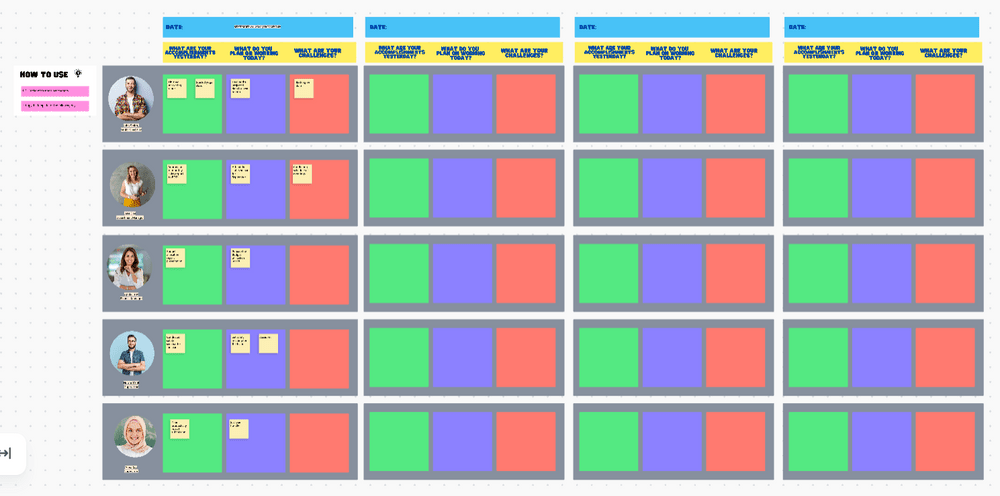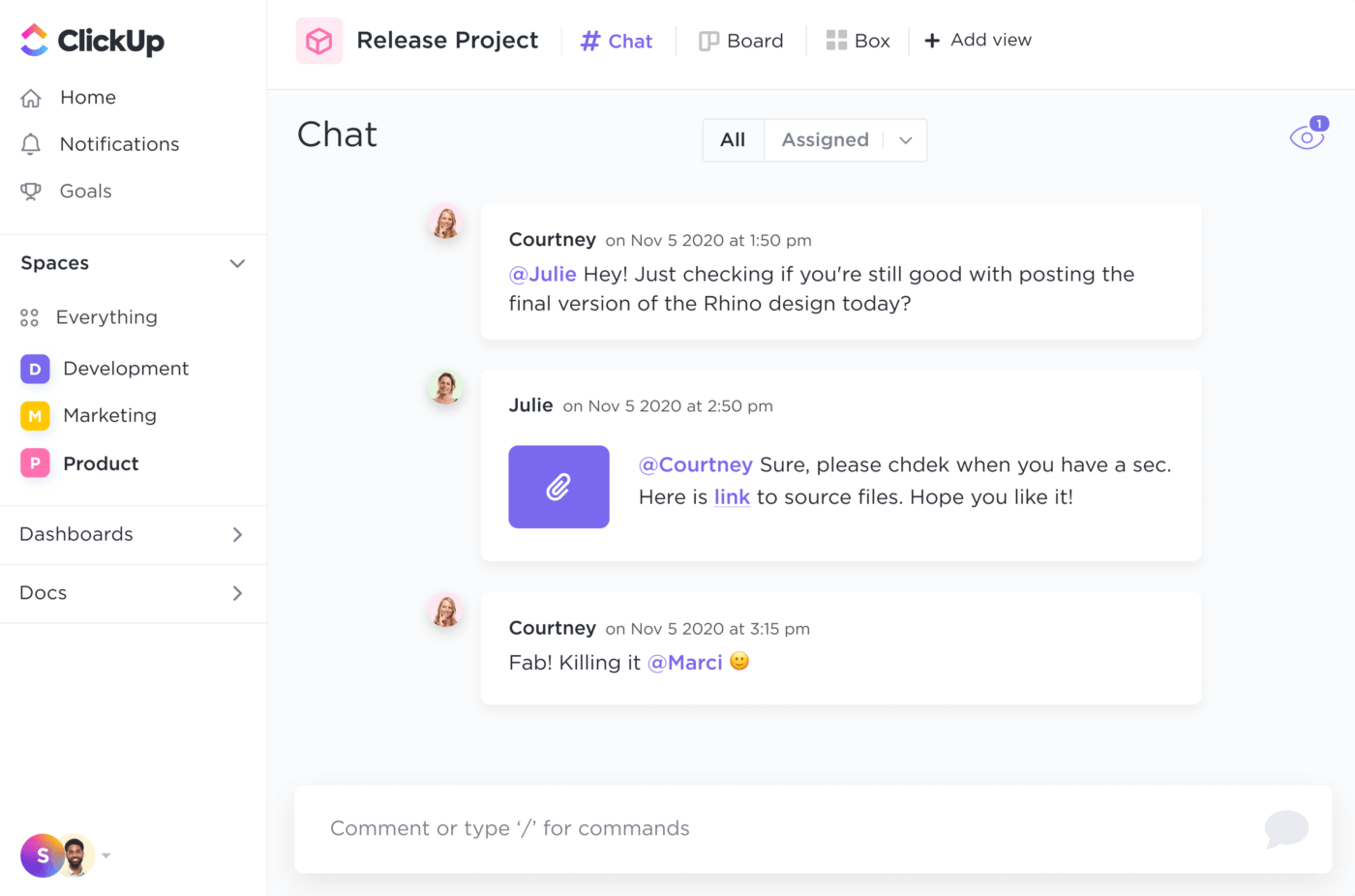10 Effective Group Decision-Making Techniques for Teams

Sorry, there were no results found for “”
Sorry, there were no results found for “”
Sorry, there were no results found for “”

Group decision-making techniques have a way of transcending individual prowess and creating symphonies of collective intelligence.
These methods celebrate diversity and clear the way for ideas to flow freely, guiding your team toward decisions and success.
From vibrant brainstorming sessions to structured methodologies that harness the power of diverse perspectives, group decision-making is at the heart of modern teamwork. 🤝
This guide explores the best group decision-making techniques to align your team members in a harmonious crescendo of creative ideas and potential solutions.
Here are the 10 Group Decision-Making Techniques & Tools to Find What Works Best for Your Team:
Group decision-making is a collaborative approach where people collectively discuss, analyze, and evaluate different options to solve problems and find the best solutions. It’s used in various contexts, including business meetings, academic settings, community organizations, and social groups.
Also known as a collective decision-making process, it’s characterized by a group exchanging ideas, perspectives, and information. Team members collaborate as they explore possible solutions and problem-solving methods to achieve a consensus or majority agreement.
For example, a small group might work together to analyze a specific problem within their organization, complete with brainstorming sessions and dynamic meetings.
After carefully exploring different ideas, opinions, and options, the group chooses a solution with the best chance of addressing the issue.
Note that the dynamics of group decision-making involve the interplay of individual opinions, preferences, and expertise within the group, and each of these aspects can influence the outcome.
The importance of group decision-making comes from moving beyond individual brilliance and using collective intelligence to foster innovation and success.
Here are some of the ways group decision-making techniques benefit teams and organizations:
The list could continue, but you’re here for techniques, so we’ll stop there. Long story short, magic happens when a diverse group of people put their minds together.
Like individual decision-making, it’s important to be aware of the potential disadvantages of group decision-making. After all, nothing is perfect, and almost everything can be executed poorly.
One of the most common issues is groupthink. When this happens, the group prioritizes harmony over critical thinking, often leading to flawed and irrational decisions.
Another common problem with collaborative decision-making is that unharmonious team collaboration is often time-consuming. In other words, group decision-making sometimes leads to bad decisions and wasted time.
Using proven group decision-making techniques is a great way to avoid these pitfalls and reap benefits like improved creativity, mitigated risks, and engagement.
Every member of the group benefits from finding the right formula for your team’s decision-making prowess. It’s all about determining the right combination your team needs to make better decisions.
You’ll need different decision-making techniques and tools depending on your problem, organization, goals, and group members.
Review these 10 group decision-making techniques and tools to understand what will work for you and your team.
Brainstorming is a group decision-making technique that embraces the spontaneous and collaborative generation of diverse ideas.
In doing so, group members foster creative solutions and encourage the exploration of possibilities without the hindrance of biases.
Not a huge fan of traditional brainstorming? That’s okay!
ClickUp’s Whiteboards have redefined brainstorming and group decision-making processes by providing teams an interactive canvas to transform ideas into impactful actions. It breaks down communication barriers and encourages the free flow of ideas.

Annotations, comments, and reactions facilitate instant feedback, transforming your Whiteboard into a space where every team member’s input is valued.
ClickUp Collaboration Detection enables everyone—even remote teams—to brainstorm on the same Whiteboard simultaneously, creating a visual symphony of brilliance.
Dialectical inquiry is a structured process that divides team members into two subgroups. Each subgroup then forms and explores a set of opposing viewpoints and contrasting arguments.
After both sides present their alternative solutions, the group debates to agree on a single set of viewpoints. The final decision may incorporate elements from a single approach, both approaches, or neither.
This is a good way to create a meeting agenda that prevents groupthink from sabotaging important decisions.
By systematically exploring conflicting perspectives, dialectical inquiry seeks to uncover hidden assumptions, identify potential pitfalls, and encourage critical thinking. It harnesses the power of constructive conflict, fostering an environment where dissent is a catalyst for innovation.
A decision tree is like an organized brainstorming board that offers a structured visual representation of potential alternatives and outcomes tied to a series of choices or actions. 🌳
Decision trees typically begin with a single node that branches into multiple potential outcomes. Each outcome serves as a node, further branching into additional possibilities and creating a comprehensive map of potential decision pathways.

This approach gets even easier when you use Whiteboards by ClickUp. Whiteboards make creating a visual decision tree simple and map group discussions accordingly. And thanks to the straightforward, user-friendly interface, everyone gets a better idea of the insights and possibilities being explored.
Playing the role of the devil’s advocate is beneficial when done correctly, especially for group decision-making.
You’ll start by assigning one person or a group to become critics of each idea brought to the table. This can prevent groupthink, improve group dynamics, and highlight potentially risky or expensive decisions.
Using team collaboration software like ClickUp makes this easier by giving teams multiple ways to communicate their thoughts and ideas. This technique works for almost all types of meetings, too.

For instance, imagine a scenario where your group uses ClickUp Whiteboards for their brainstorming session. Here, devil’s advocates seamlessly express their critiques through comments, reactions, and annotations directly linked to specific ideas and thoughts.
This allows the entire team to review and discuss before arriving at the most informed and strategic course of action.
Democratic decision-making does away with the idea of designated decision-makers. It’s a voting system and the majority rules.
This technique works in a few different ways. The most obvious application is to come to your final decision based on a group vote.
However, team members who voted for a different decision than the one that “wins” sometimes don’t feel as passionate about supporting it. If the assigned group leader thinks that this is a possibility, democratic decision-making is also helpful in narrowing down the potential alternatives that your group meetings are discussing.
Questionnaires delivered to the team facilitator keep everyone’s vote anonymous and empower people to vote honestly, which reduces the risk of groupthink.
Democratic voting can also speed up the process of group decision-making when you’ve reached a plateau.

ClickUp’s Form view can streamline vote collection by enabling team members to submit their opinions and preferences in seconds.
The nominal group technique (NGT) harnesses the collective insights of individuals while maintaining a structured approach. In other words, it makes brainstorming a more standardized process.
Group members are encouraged to generate ideas independently and then share them with the group. This speeds up decisions and group consensus, especially for projects that require cross-functional collaboration.
Each team member shares their thoughts without discussion. Once everyone has presented their ideas, the group discusses them to clarify points. A structured voting process then ranks the suggestions by priority and viability.
The Delphi technique distills collective wisdom from subject matter experts while maintaining anonymity. The group assigns a facilitator to pose open-ended questions to a panel of experts for independent and anonymous responses.
The team or facilitator will then compile, summarize, and share these responses with the group of experts to gain further feedback. This compilation, summarization, and sharing process is repeated until a decision is reached.

The Delphi method aims to mitigate the influence of dominant personalities, organizational behavior, and group dynamics so experts can contribute without confrontation.
This systematic exchange of information and opinions is particularly effective for complex decision-making, strategic planning, and other scenarios where diverse expertise is critical.
Unanimity in group decision-making refers to the condition where every person agrees and supports a proposed course of action. 🙌
Teams often approach the unanimity technique as an open discussion, information-sharing, or brainstorming session. The final decision is made once everyone reaches a consensus with collective endorsement and shared perspective.
Achieving this level of harmony and cohesion in a group is great, but it’s often time-consuming. Anyone who’s spent days on jury duty trying to come to a unanimous verdict might (understandably) cringe at the mention of this technique.
With the time element in mind, unanimous decisions are best for situations that demand complete agreement for the success or acceptance of the chosen course of action.
You might want to try other group decision-making techniques on this list for smaller decisions, though.
Stand-up meetings are the opposite of the unanimity group decision-making technique. They’re designed to be short and effective with zero wasted time, so they’re often held standing (or sometimes walking).
These meetings involve each team member taking turns in a round-robin-style discussion, answering simple questions like these:
Adjust and expand upon these questions to address the specific decision your team is trying to make. Then, use the ideas and information gathered from this stand-up meeting to decide in a more formal meeting.

The point of the daily standup meeting is to aid team coordination. This fast feedback loop helps teams align and stay on track, similar to a football huddle. If an issue pops up, you can address it quickly and keep projects on track.
ClickUp’s Daily Standup Meeting Template gives you everything you need to plan, take notes, and track project progress. Pair it with ClickUp’s Stand Up Meeting Agenda Template to eliminate the guesswork and improve your team’s group decision-making process.
The right decision-making tools and apps can improve every technique on this list. 🛠️
While we’ve already given some examples of how ClickUp can be used for other techniques on this list, it’s useful for much more than that. Use ClickUp for Teams to assist your team members across almost every facet of project management and decision-making, regardless of the department or how big (or small) your company is.
For example, ClickUp Chat view brings all communication and conversations about the decision together on one platform. This makes it easier to review existing information, ideas, and contributions more efficiently.

The ClickUp Communication Plan Template is another great tool to leverage. Use it to improve any (or all) of these techniques with better communication, whether your team is remote, hybrid, or on-site.
That’s just one of over 1,000 templates ClickUp offers for better decision-making, project management, and meeting efficiency.
For example, you can use our task list templates to create a structure for your decision-making meeting ahead of time or work as a team to optimize a task list for a given project.
Digital decision-making tools like ClickUp also save you time by automating daily tasks, generating AI summaries of your meetings, tracking project progress, and keeping team members on the same page.
Choosing the right group decision-making processes is paramount for successful, innovative choices.
Remember, each team member plays a unique role in crafting the collective masterpiece that is a well-thought-out decision. Use the above group decision-making techniques to propel your team members (and organization) toward a happy, harmonious future.
It’s time to embrace techniques like brainstorming, democratic voting, the NGT, and the Delphi method to create an environment that fosters visionary decisions and strategies.
Experience the transformative power of a platform that streamlines your collaborative efforts and turns the diverse voices of your team into a harmonious masterpiece. Sign up for ClickUp today—it’s free!
© 2026 ClickUp